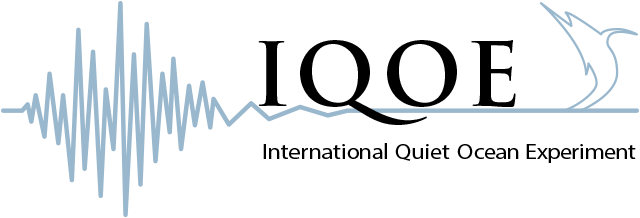Several types of ocean environments have high biodiversity, such as coral and deep-water reefs, mangrove forests, and kelp forests. This working group aims to develop the potential to monitor sound high-diversity ocean areas continuously to help characterize and understand biodiversity.
Co-chairs
Aran Mooney (USA)
Lucia di Iorio (France)
Other Members
Marc Lammers (USA)
Songhai Li (China-Beijing)
Tzu-Hao Lin (China-Taipei)
Sophie Nedelec (UK)
Miles Parsons (Australia)
Craig Radford (New Zealand)
Jenni Stanley (USA)
Ilse Van Opzeeland (Germany)
Terms of Reference
The objectives of such a Working Group might be to develop work programmes aimed at the following actions:
- Further develop passive acoustics as an ecological survey technique, capable of comparing the acoustic characteristics of different adjacent habitats.
- Generate and leverage support for soundscape measurements in high biodiversity ocean areas, accurately promoting the utility (and limitations) to managers and other users.
- Develop pilot projects to apply acoustic techniques to examine the main forces acting upon high-biodiversity ocean areas and resulting in changes in biodiversity.
- Evaluate and develop analytical techniques that may be used to track and monitor acoustical and community biodiversity over time, techniques that may be able to monitor and inform changes to high=biodiversity areas under stress.
- Develop understanding of the interrelationship among acoustic parameters with respect to the environmental parameters such as temperature, flow, wind data etc.
- Determine how changes in the acoustic environment over space and time, especially as a result of human-made noise/sound, affects animals (distribution patterns, migratory behavior and acoustic communication) associated with high-biodiversity ocean areas and adjacent habitats their distribution patterns, migratory behavior and acoustic communication.
- Develop standardized passive acoustic recording protocols for identifying, quantifying, detecting and cataloguing the sounds made by marine organisms and determining the best approaches to provide a library of sounds for high-biodiversity ocean areas.
- Help coordinate and stimulate national efforts on the bioacoustics of high-biodiversity ocean areas.
- Develop a suitable analytical technique to identify and quantify vocalizations from marine animals, and the contexts in which they are produced.
- Investigate effective sound metrics to characterize the biodiversity of high-biodiversity ocean areas.
Activity Areas
Metrics for Marine Acoustic Diversity
Mooney, T.A., L. Di Iorio, M. Lammers, T-H. Lin, S. Nedelec, M. Parsons, C. Radford, E. Urban, and J. Stanley. 2020 Listening forward: approaching marine biodiversity assessments using acoustic methods. R. Soc. Open Sci. 7:201287. http://dx.doi.org/10.1098/rsos.201287
Global Library of Underwater Biological Sounds (GLUBS)
Parsons, M.J.G., T.-H. Lin, T.A. Mooney, C. Erbe, F. Juanes, M. Lammers, S. Li, S. Linke, A. Looby, S.L. Nedelec, I. Van Opzeeland, C. Radford, A.N. Rice, L. Sayigh, J. Stanley, E. Urban, and L. Di Iorio. 2022. Sounding the call for a Global Library of Underwater Biological Sounds. Front. Ecol. Evol. 10:810156, doi: 10.3389/fevo.2022.810156
Looby, A., C. Erbe, S. Bravo, K. Cox, H.L. Davies, L. Di Iorio, Y. Jézéquel, F. Juanes, C.W. Martin, T.A. Mooney, C. Radford, L.K. Reynolds, A.N. Rice, A. Riera, R. Rountree, B. Spriel, J. Stanley, S. Vela, and M.J.G. Parsons. 2023. Global inventory of species categorized by known underwater sonifery. Scientific Data 10, Article number: 892, https://doi.org/10.1038/s41597-023-02745-4
World Ocean Passive Acoustic Monitoring (WOPAM) Day 2023
The Richard Lounsbery Foundation awarded Cornell University a grant to support a post-doctoral fellow to help analyze data from the first WOPAM day. Isla Davidson was selected to fill the position. The project aims to (1) develop an open-access database of sounds from each of 300+ WOPAM sites around the world; (2) create a WOPAM Day website, populated with information about the project, links to partner web pages and sound levels at sites with calibrated measures, as a shared resource; (3) create online media about the initiative; and (4) develop one or more peer-reviewed journal articles describing WOPAM Day and resulting analyses of data. The project will also help integrate the WOPAM Day activity with GLUBS and IQOE. See https://twitter.com/DrSteveSimpson/status/1666715093495685121.
